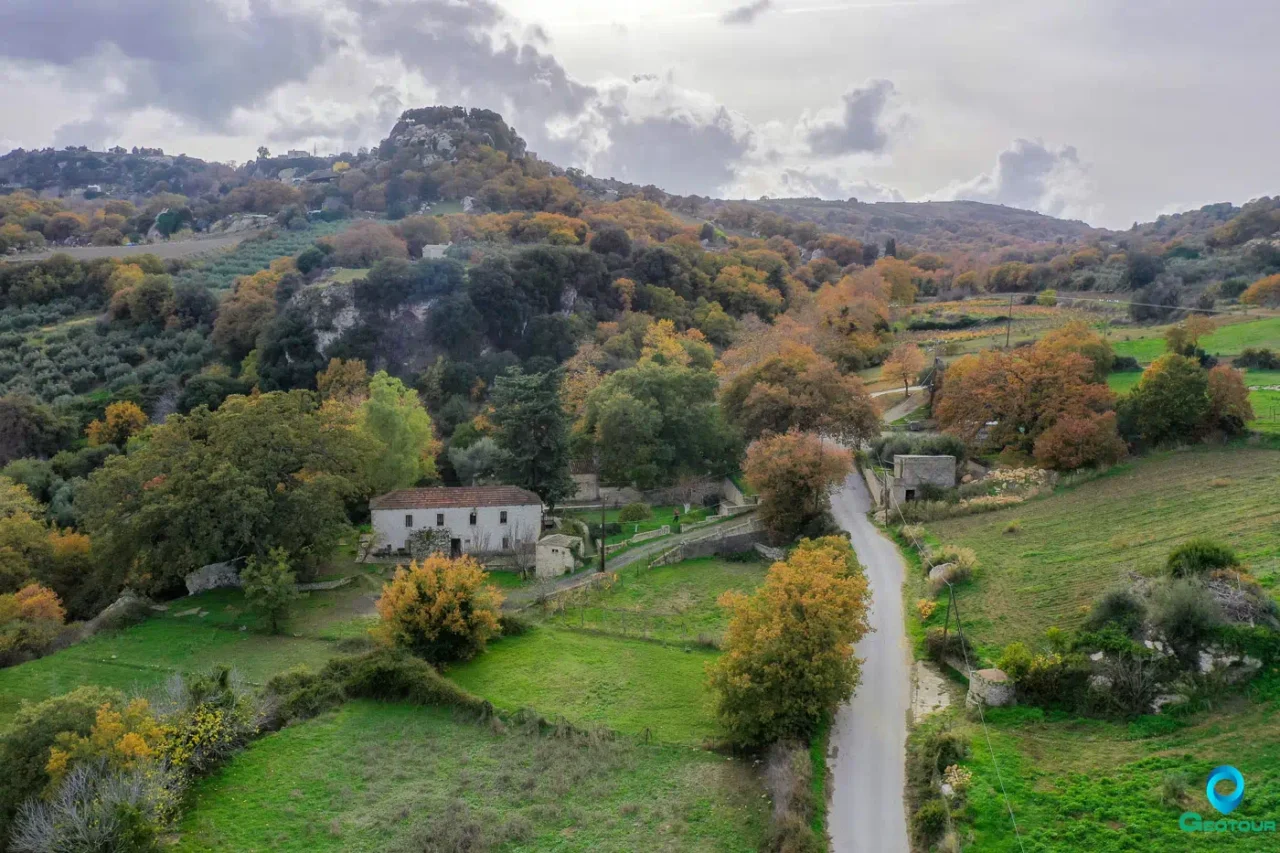
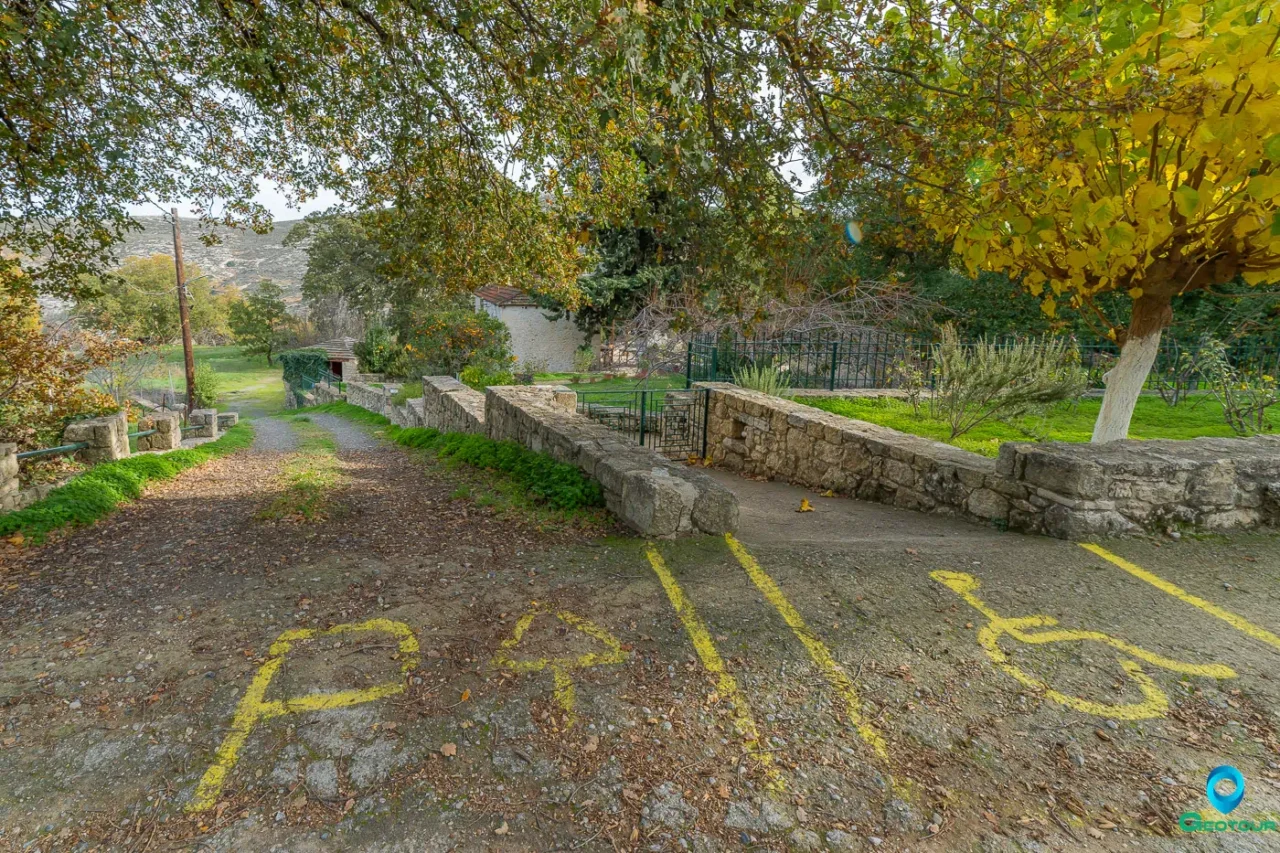
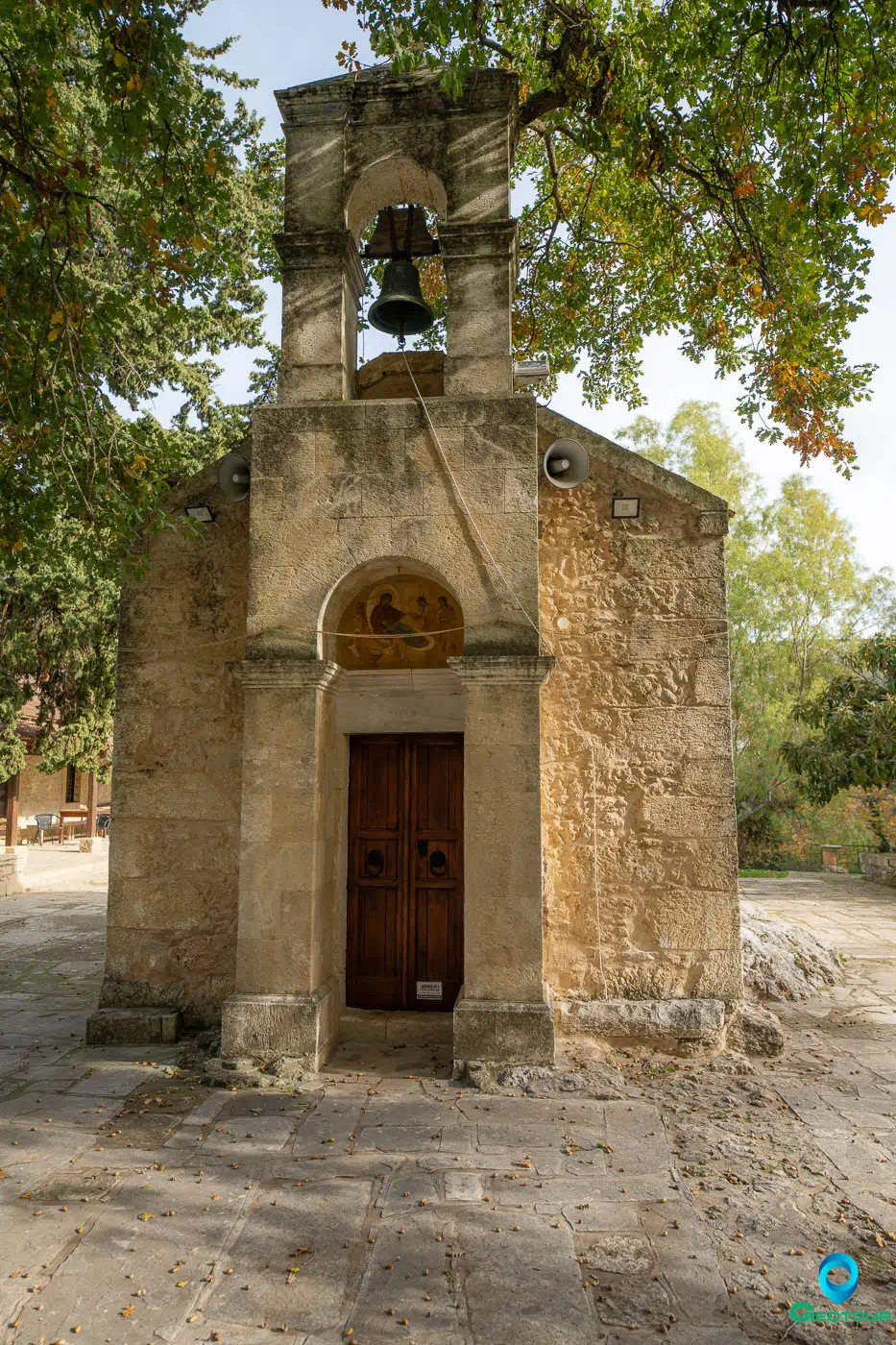
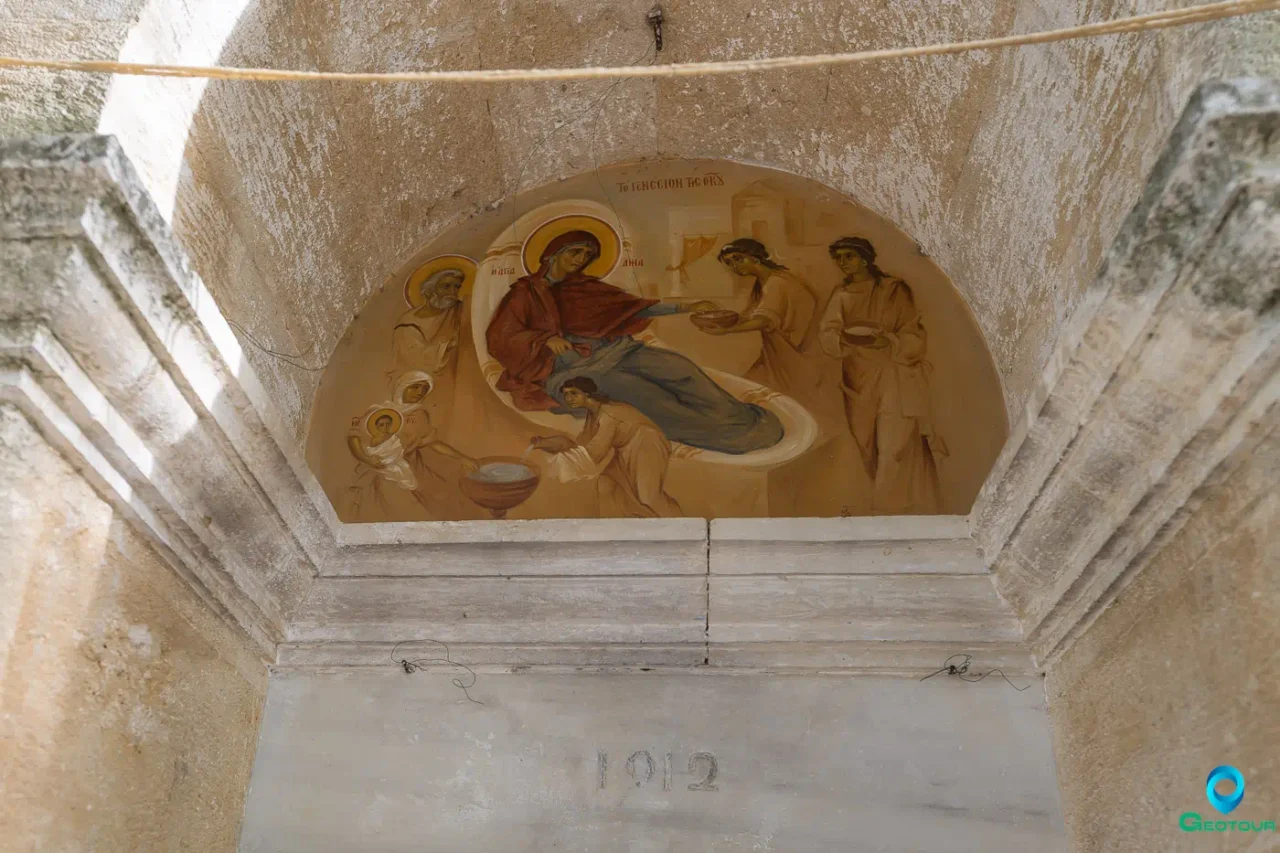
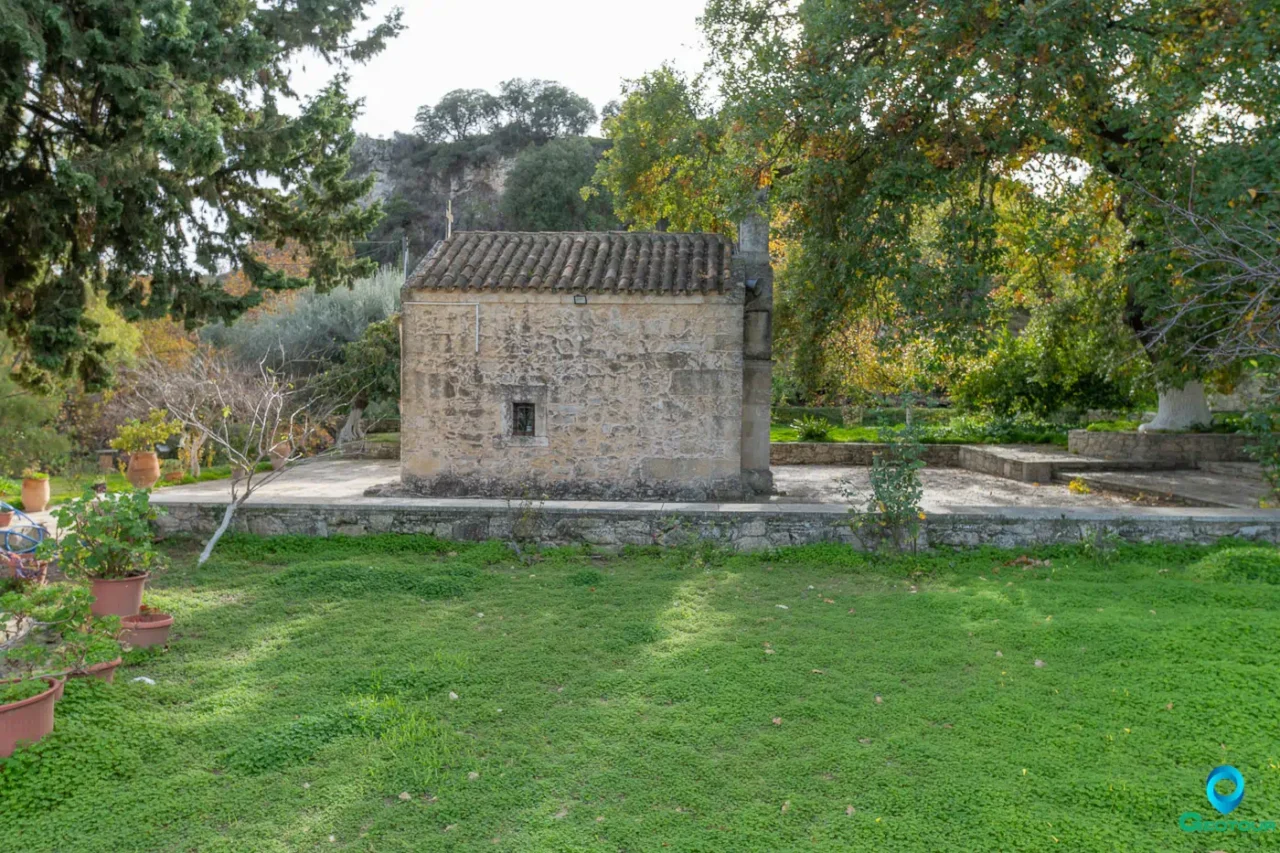
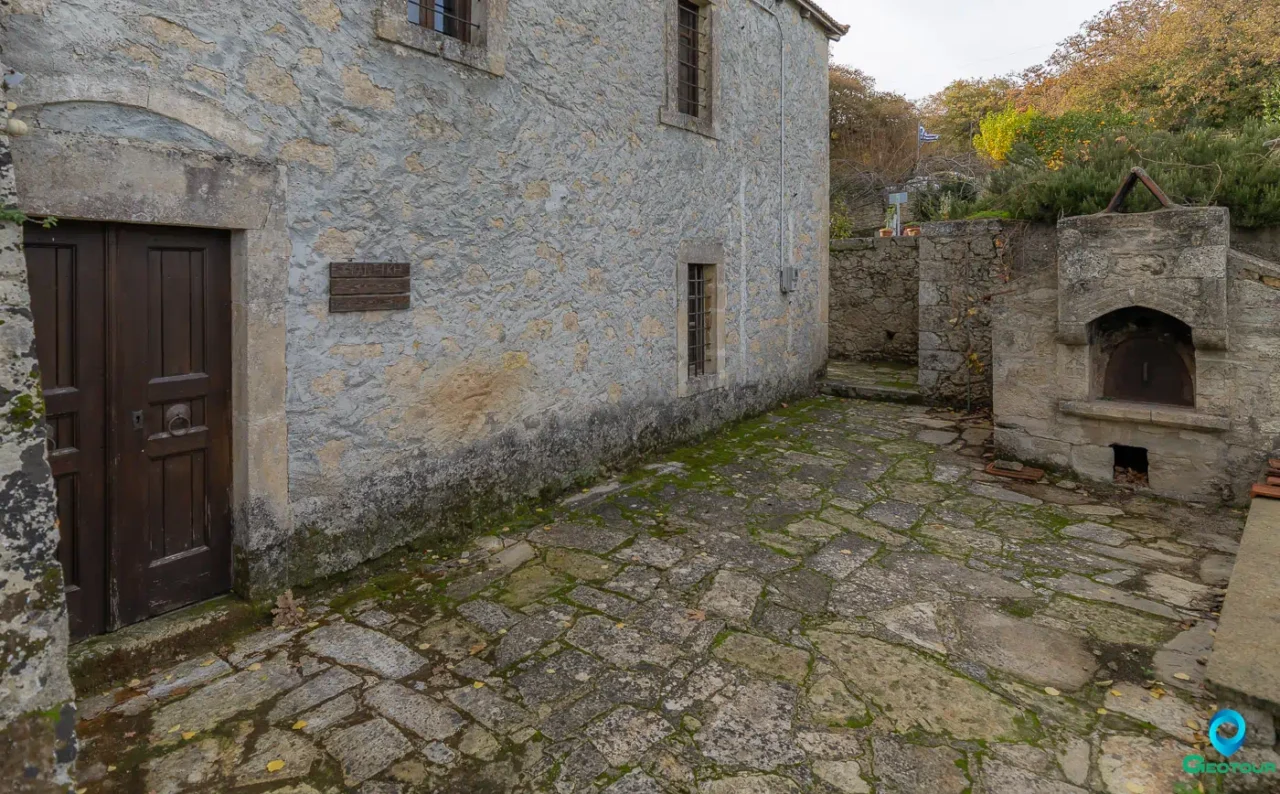
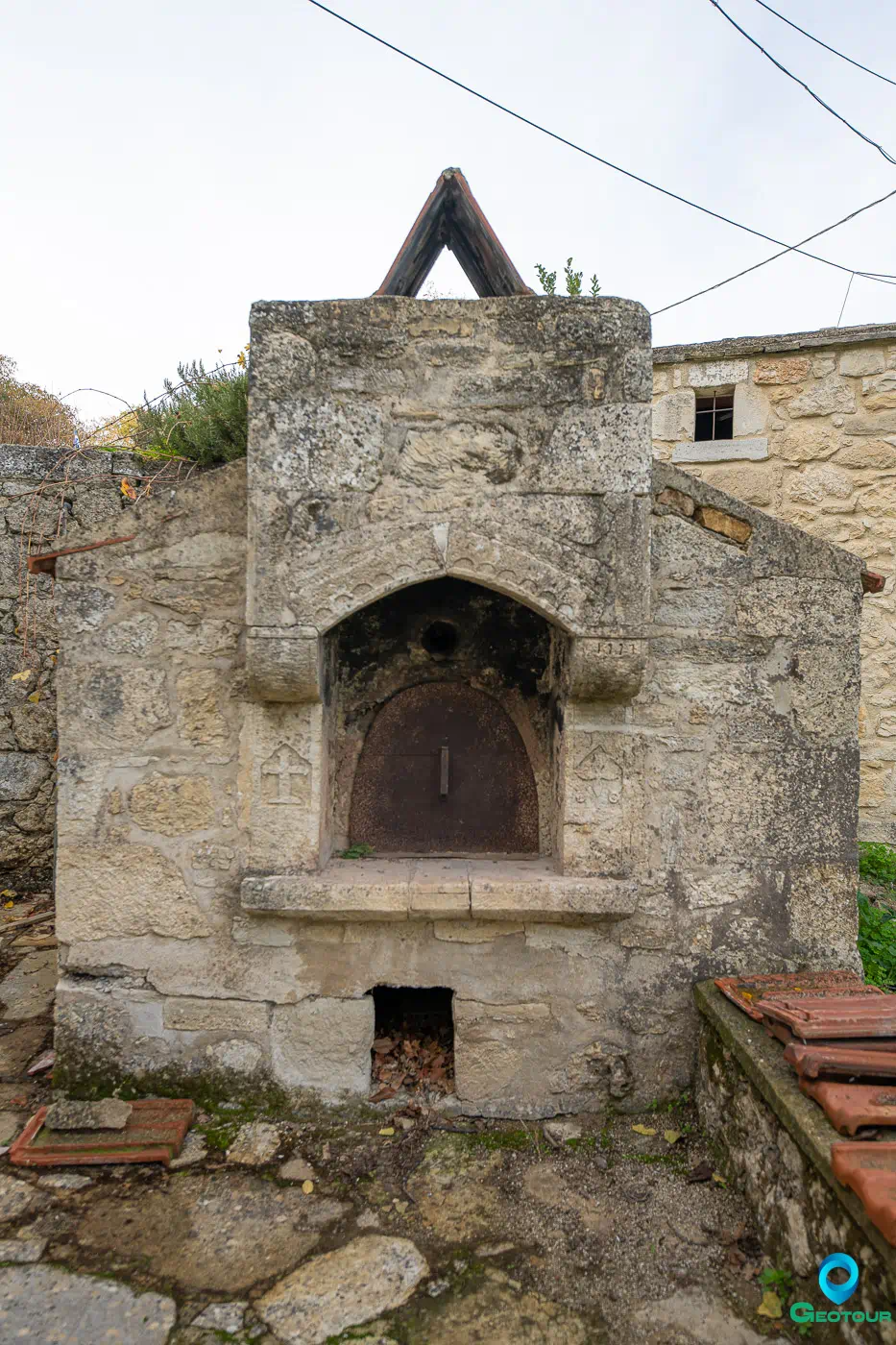
Panagia Kera Kardiotissa, a monastery dedicated to the Nativity of the Virgin Mary, is located a few kilometers from Agios Thomas in Crete, in a lush landscape at an altitude of 630 meters. The exact period of the monastery’s foundation is unknown, but it is mentioned in a document from 1333 and likely predates the Venetian conquest of Crete during the Second Byzantine period (961-1210).
The monastery housed a miraculous icon of Panagia Kardiotissa, depicting the Virgin Mary holding Christ. According to one account, it was created by Lazarus, an Armenian monk who lived and was martyred in Crete. Another account attributes the icon to the Heraklion painter Andreas Ritzos in the 14th century. The icon’s miraculous powers were first mentioned by the Florentine priest Christoforos Bouondelmonti in his work “Description of the Island of Crete in 1415,” as well as by the English traveler Robert Pashley in his “Travels in Crete” (1837). One tradition even suggests that the icon was taken to Constantinople and returned during the Iconoclasm period.
The name “Kardiotissa” has two possible interpretations: either because the Virgin Mary holds Jesus near her heart in the icon, or because of the abundance of walnut trees (“karydies” in Greek) in the area. The latter interpretation suggests a connection to the toponym “Kareotissa,” as walnuts were harvested in September when the Nativity of the Virgin Mary is celebrated.
In 1912, Panagia Kardiotissa became a well-known pilgrimage site after a woman had a vision in which the icon of Saint George was revealed. The Byzantine church of Panagia Kardiotissa, built in the 14th century on the ruins of an ancient temple, is located a short distance from Agios Thomas in a place called Mouzouras, next to the Axedianos River.
Construction Period:
- 14th Century
Location:
- Near Agios Thomas in Heraklion, in a place called Mouzouras, next to the Axedianos River.
Dimensions:
- Not mentioned in the provided context.
Historical Significance:
- One of the oldest monasteries in Crete.
- Housed a miraculous icon of Panagia Kardiotissa.
- Became a well-known pilgrimage site after a woman had a vision in which the icon of Saint George was revealed.
- Served as a nunnery from 1935 to 1962.
- During the German occupation, it sheltered residents from the surrounding area.
Current Status:
- The site has been renovated and is open to visitors.
- Features a centuries-old oak tree and peacocks.
- Houses a workshop for women of Agios Thomas who engage in traditional weaving.















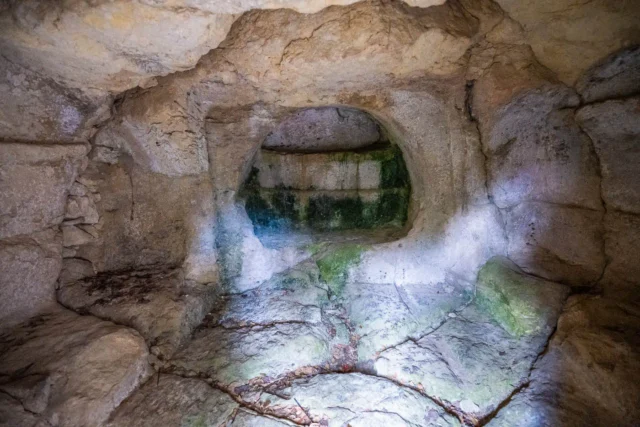

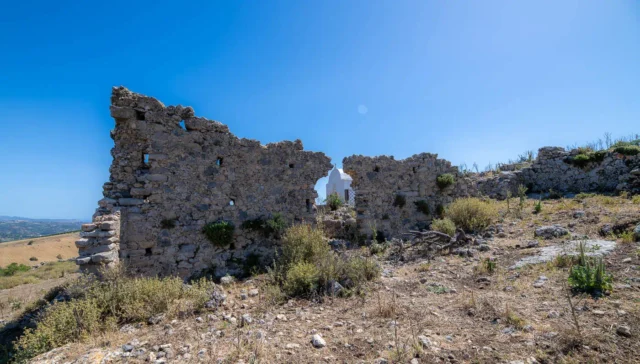
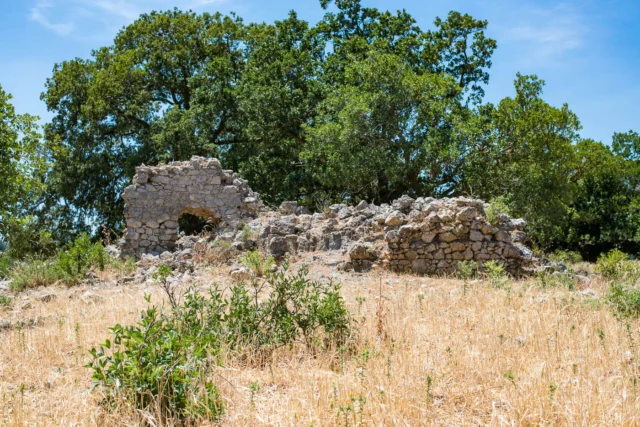
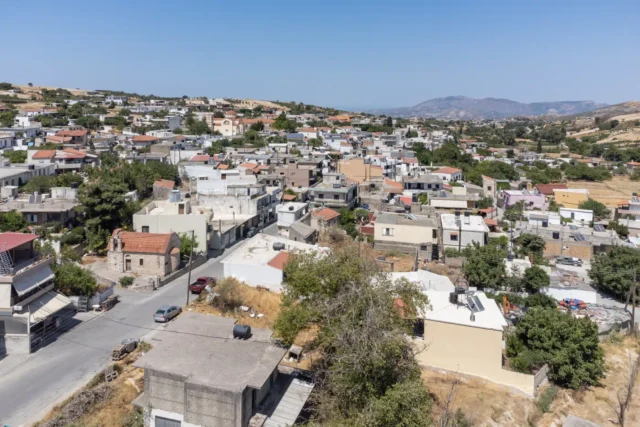

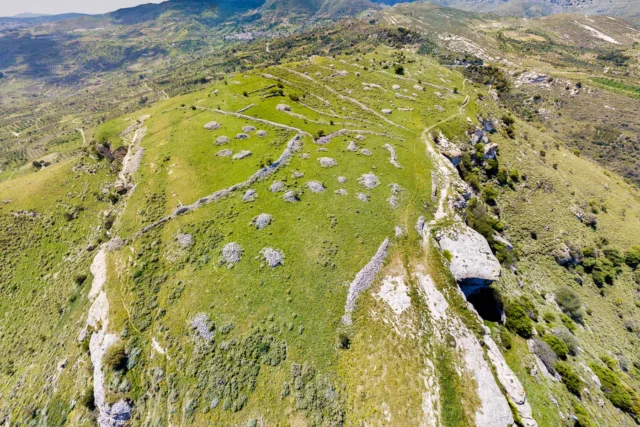




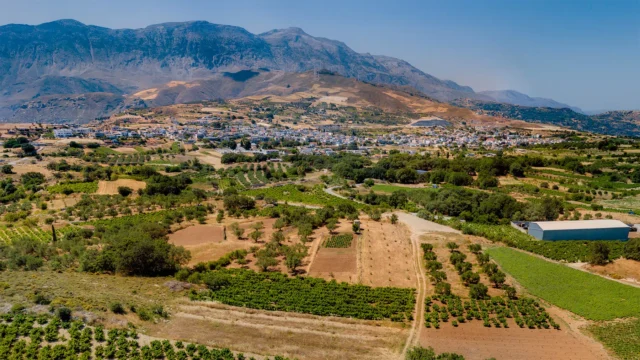
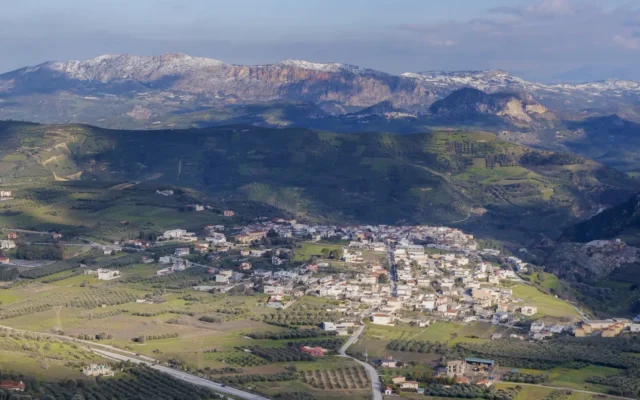
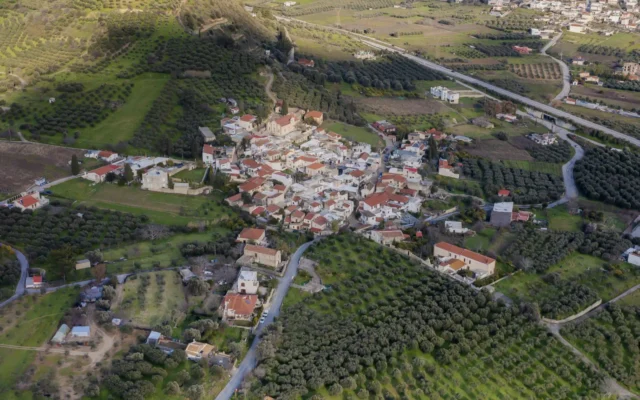

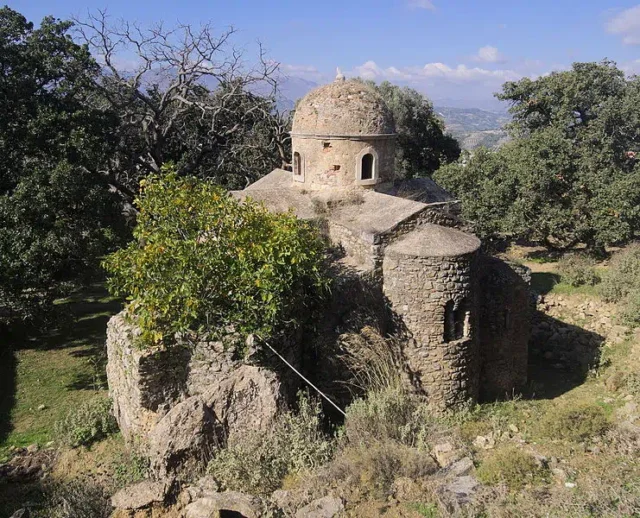

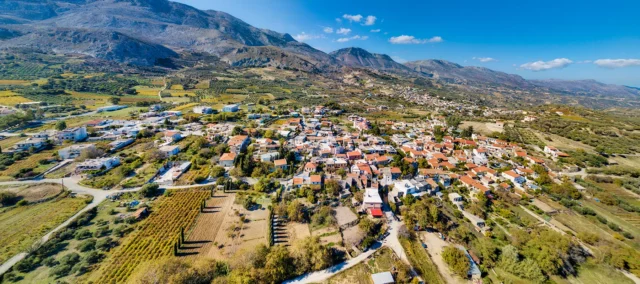

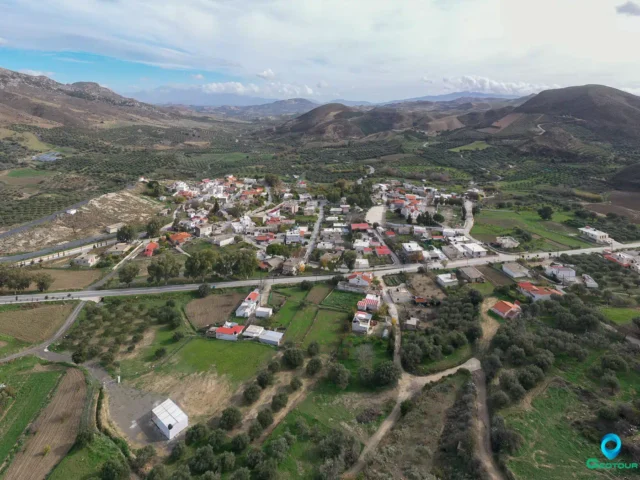

There are no comments yet.